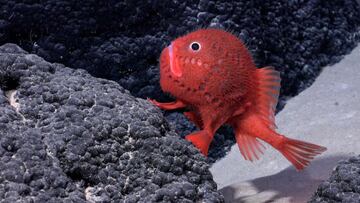Over 100 never-before-seen species discovered off the coast of Chile by robotic submarine
The discovery of new marine species was made by an international scientific expedition that investigated unknown depths of the Chilean Pacific Ocean.

The 4,000-mile Chilean coastline makes it evident that the country has an enormous wealth of aquatic species in the Pacific Ocean. A group of researchers recently came up with evidence that the depths of this sea is teeming with creatures that have yet to be identified.
More than a hundred new marine species
Led by Javier Sellanes of the Universidad Católica del Norte, an international team of scientists obtained valuable evidence of what could be a biological treasure off the coast of Chile.
The Schmidt Ocean Institute expedition confirmed the existence of deep-sea corals, glass sponges, sea urchins, amphipods, hermit crabs along with other aquatic living beings that have never been seen before. The total number of discovered animals exceeds 100 species.
The research covered the seamounts of the Nazca and Salas y Gómez Mountain Range, inside and outside the maritime zone of Chile. The study’s objective was to collect data that could support the designation of a marine protected area at the international level.
READ ALSO: Areas most affected by the fires in Texas
READ ALSO: Who owns the treasure found in the San José galleon, wrecked in the Caribbean Sea?
Easter Island and Juan Fernández
The area studied during the expedition is part of the underwater mountain range that runs from the Chilean coast to Easter Island or Rapa Nui. Scientists studied two of Chile’s marine protected areas.
These large aquatic areas were the Juan Fernández and Nazca-Desventuradas marine parks. For this, scientists made use of an underwater robot. The machine was able to descend to depths of 4,500 meters to gather data from ten seamounts.
The scientists who made the discovery say that it could take years to identify the species they found at the biodiversity hotspot.





